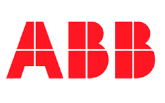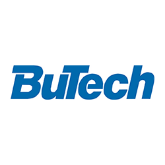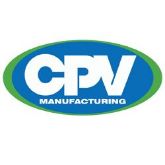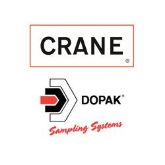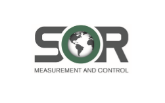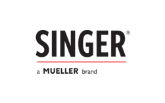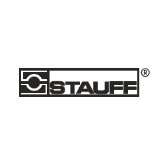PROVIDING A COMPREHENSIVE VALUE ADDED SERVICE
At Prochem we recognise industry requirements in providing a comprehensive value added service including the supply of pipe and fittings. To this end, we have introduced a Stainless Water Solutions Package.
In addition to product supply, Prochem offers a pipe cutting and roll grooving service that is quality controlled, meeting the highest industry standards for stainless steel mechanically joined systems.
Where required, Prochem will arrange fabricated components and assemblies to meet engineering specifications for Process, Drinking, Desalination, Fire Service, Marine and other water applications.
With Prochem's Quality Assurance program we will meet industry requirements in Water, Mining, Refining, Food & Beverage Processing and the Offshore Oil & Gas Industries.

WHERE STAINLESS STEEL IS THE PREFERRED MATERIAL
PROCESS WATER
This covers a wide scope of applications including building services, industrial, mining and irrigation. Generally, these water applications cover air-conditioning systems - condenser water lines, factory feed water lines, wash down lines and many other non-drinking water applications.
Stainless pipes, valves and fitting products which are used for this market sector, do not require the material to be certified in accordance with the plumbing industry drinking water criteria, but may specify ASTM, grade and/or wall thickness relevant to the specific service applications.
DRINKING WATER (Potable)
This is an application where pipes, valves and fittings are used for the purpose of supplying water to buildings where water is mainly used for consumption.
Water supply systems and materials of this type are installed by hydraulic services, "plumbers", in accordance with the Plumbing Code of Australia (PCA). This plumbing code specifies that all material used for drinking water applications shall be tested and certified against relevant product standard to ensure they meet the minimum requirements of the Australian Standard for Plumbing AS 3500 Parts 1, 4 & 5. The code also requires stainless materials used for drinking water requirements to have a minimum pitting resistance equivalent number (PREN) of 22.
316/316L stainless steel meets the minimum PREN requirements thus is the "material of choice" for this market. The approved products are known as WaterMark and bare the WaterMark logo.
Under the plumbing standard for water piping installation, Parts 1, 4 & 5, the plumbing system must be installed with products that clearly show this certification mark.
The added advantages of using stainless piping systems is that they can be used for ablution and/or supply to fire fighting services through one (1) single pipeline.
The Prochem stainless pipe range, includes both schedules 5S & 10S in 316/316L dual grade, and are certified to the Australian Standard. The pipes are marked identifying the material grade, specification number, manufacturer's name, licence number, heat trace number and carry the WaterMark logo.
Plumbers working in this market should always ask for stainless products which carry the WaterMark stamp of approval.
RECYCLED AND RE-USED WATER SYSTEMS
Stainless pipes and fittings are the "material of choice" for these applications. Grade 316/316L with roll grooved pipe fittings meet the industry requirements, thus providing strength, long-life, cost benefits and corrosion resistance. Recycled water piping shall also meet the requirements of the Plumbing Code of Australia (PCA).
FIRE SERVICE SYSTEMS
The use of stainless piping offers the ideal solution where the systems are regularly tested and new water is introduced.
Stainless pipes and fittings are in accordance with AS 2419 and AS 2118, approved for fire hydrants and fire sprinkler system applications.
MARINE APPLICATIONS
Stainless grade 316/316L is most commonly used today in the construction of buildings and water supply services where marine and aggressive environments are encountered. Stainless steel is recognised as the premium material for marine applications offering excellent corrosion resistance, strength and hardness. 316/316L grade stainless has an excellent oxidisation resistance for the long term protection of the pipe and fitting structures.
316/316L stainless resists rusting in most architectural applications and is often chosen for more aggressive environments such as industrial and sea-front buildings, wharves and piers.
Benefits of Stainless Steel in Water Applications
Stainless has a higher strength and ductility when compared to general steel, copper, plastic, cast iron pipes and fittings. The higher strength results in a reduction of wall thickness required for the service pipe.
Coatings or cathodic protection is not required for stainless in most locations.
A thin adherent chromium-oxide layer provides the corrosion protection. This chromium-oxide layer is self healing, therefore, no extra corrosion protection is required.
Stainless is much more resistant to erosion corrosion caused by high flow rates and particulate matter than that of steel and copper. Grade 316/316L stainless pipes can handle high velocity and turbulence with minimal affect on the wall thickness.
Stainless retains low hydraulic friction properties as compared to other metallic piping systems. This results in lower water pressure losses and pump energy savings.
Having excellent ductility and the ability to be formed and welded into lightweight shapes, assists in the ease of pipeline installation. Stainless piping systems are interchangeable and easily coupled together with other materials used in general fluid applications.
Note: It is recommended to refer to a galvanic series table when combining different materials
Environmental and Cost Benefits of Stainless Pipe and Fittings
Stainless lasts longer and costs less over its desired lifetime. It achieves these two (2) aims primarily because it is corrosion resistant and durable. Stainless is very strong, defending against wear and tear that typically increase maintenance costs.
The heat and corrosion resistance properties of stainless also significantly add to its life-cycle advantages by decreasing down-time and maintenance.
Stainless meets the challenge of environmentally friendly product, being completely recyclable and causing minimal negative impact on the environment.
Stainless requires less post fabrication processes and therefore is less harmful to the environment.
Stainless lasts longer, lowering the strain on valuable resources.

